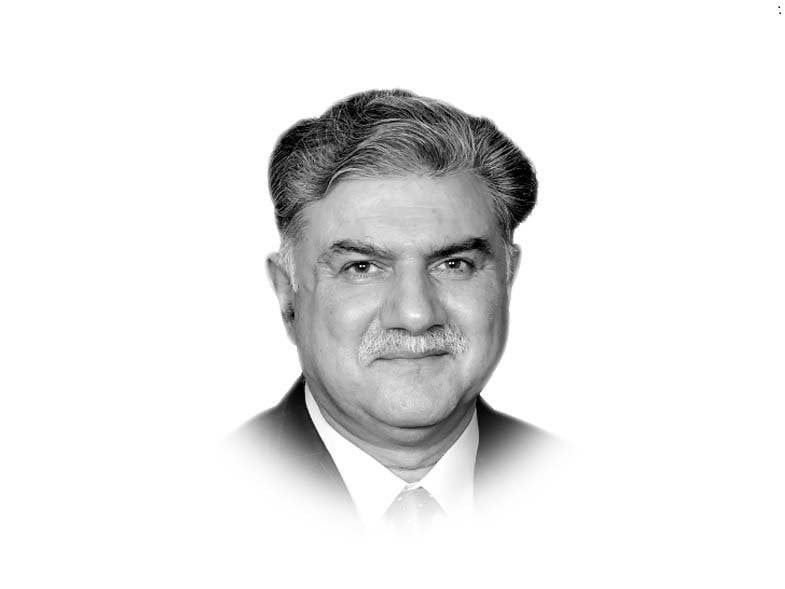
Last week, based upon February 2023 report by SIGAR (US Special Inspector General for Afghanistan Reconstruction), reasons for failure of Afghan National Defence and Security Forces (ANDSF) against the Islamic Emirate (IEA) were pointed out, highlighting the US perspective. This piece follows on.
The decision to raise an internationally trained and professional ANDSF from scratch was taken by the US and its Coalition partners in 2002. The US took the lead to raise ANA, whereas ANP (Police) reform was entrusted to Germany; counternarcotics was assigned to Britain; judicial reform went to Italy; and Japan had to deal with ‘disarmament, demobilization, and reintegration’.
Initially, the US Special Forces undertook raising and training of ANA, however, raising and training a national army was considered beyond the ‘core competency of the Special Forces’. So, in May 2002, Army’s 10th Mountain Division was deployed to Afghanistan to expand ANA training effort from small units to larger formations, besides developing competencies like logistics etc. However, once this Division was moved to Iraq in 2003, the project was relegated to Army National Guard units on rotational basis.
In 2005, after realizing that division of responsibilities was not yielding, the US assumed lead role for both ANA and ANP, and set up CSTC-A (Combined Security Transition Command- Afghanistan) in 2006 to train, advise, assist and equip ANDSF. Under worsening insecurity, the US/NATO resorted to unrealistic training end-states and timelines under political compulsions. For example, basic training was curtailed from 14 to 10 weeks in 2007, and Kabul Military Training Center, an ANA’s training facility, increased its output from two to five kandaks (Army battalions).
For ANP a similar compressed schedule was adopted. In 2005, only 3,900 of the 34,000 “trained” ANP personnel had undergone 8-week basic training. The remainder were put through just a 2-week crash programme. A police recruit in America and most other countries, by contrast, undergoes an average basic training of around 21 weeks, followed by weeks in field training and mentoring.
On the equipment side, some ANP units had just around 15% weapons and communications equipment. ANA was ‘under-resourced causing low morale’. Yet expansion continued unabated. American officials warned their Afghan interlocutors of withholding funding, if ANP was not expanded from 60,000 to 82,000. In 2008, ANA expansion was agreed from 75,000 to 134,000, including the Afghan Air Force (AAF) with little or no regard to the associated fiscal and resource limitations.
ANA transited from a light-infantry army to a combined armed force comprising army, air force and special forces, mirror-imaging the American Military. This subsequently became ANDSF’s own undoing as the required peripherals were limited or non-existent. Despite cultural impediments like religion, lack of trust, sociology and demography, Afghan specialized units came up well following the train, advise, and assist (TAA) programmes under the US Special Operations Command and USAF.
In 2009, deteriorating security led to President Barack Obama authorizing a surge in US combat troops, besides increasing the ANDSF’s strength, capping it at 352,000 soldiers and police. He also announced a withdrawal date for US combat forces, and ANDSF was to take over security responsibility beginning mid-2011. US Military (USMIL) was now pursuing a two-track strategy of rapidly improving security, besides raising and supporting a struggling ANDSF. The US augmented critical gaps in ANDSF capability by providing ‘enablers’ like ‘close air support, airlift, medical evacuation, logistics, and leadership’. During ‘partnered’ operations, ANDSF was encouraged to model their fighting on the USMIL. This ultimately led to ANDSF’s over-reliance on USMIL especially for ‘advanced military capabilities and air support’.
So, when in 2012, the US/NATO started to withdraw, ‘ANDSF struggled to succeed on its own’. Various commanders like General Joseph Dunford, then the ISAF (International Security Assistance Force) commander, anticipated and feared deterioration. On December 31, 2014, ISAF transitioned to ‘Resolute Support mission’, stipulating support to ANDSF at regional corps level.
Sequel to the above transition, Taliban increased operational tempo and captured Kunduz, the first provincial capital in 2015, besides gains in Helmand Province, as ANA’s Helmand-based 215th Corps collapsed. Obama Administration came to rescue by deploying Special Forces and air to capture the lost territory. He authorized Marines redeployment in Helmand Province, loosened restrictions on targeting Taliban and pushed back the planned US withdrawal date.
Military operations escalated under Trump’s South Asia Strategy. However, it was after the 2020 Doha Agreement, stipulating withdrawal of all US military personnel and contractors, that the USMIL support to the ANDSF came to a sudden halt, ostensibly under Taliban commitment of no further attacks on the US/NATO troops. Taliban attacks concentrated instead against ANDSF, testing the limits of the Agreement. General Scott Miller, the then “Resolute Support” Commander, warned of ANDSF’s vulnerability, without vital USMIL support.
In March 2021, the incoming Biden administration took a review of its Afghanistan policy. Taliban had threatened to resume attacks on the US/Coalition Forces if America failed to withdraw by the May 1, 2021, deadline set in the Agreement. The US unilaterally shifted the deadline to September 11, 2021. In April 2021, the US intelligence community had provided a dismal assessment of ANDSF against a resurgent Taliban, ‘confident of achieving a military victory’.
In May 2021, Taliban overran six ANA bases in Baghlan Province, with at least 200 soldiers surrendering. Another 26 outposts and bases in four provinces laid down their arms after Taliban’s successful tasleem (surrender) strategy. Killing of about two dozen Afghan Special Forces soldiers in Faryab Province on June 16, 2021 prompted President Ghani to raise “public uprising forces” or pro-government local militias to confront Taliban. The USMIL evacuated Bagram Air Base on July 2, 2021 in the middle of the night with no prior coordination with ANDSF. During July after seizing numerous districts, Taliban expanded their war effort towards smaller cities and attacked Kandahar and Herat airports.
In early August 2021, Taliban captured seven provinces in northern Afghanistan, an area traditionally hostile to them. Local militia leaders like Atta Mohammad Noor and Abdul Rashid Dostum ultimately fled. President Ghani boasted on August 1 of a “new plan” to ‘mobilizing public uprising forces and more than doubling the elite commando forces’. However, by mid-August Taliban had captured the remaining Afghanistan.
Hence, in 30 days, ANDSF, the $90 billion enterprise of some 50 countries for over two decades, melted away offering little or no resistance to the advancing Taliban.
Published in The Express Tribune, April 6th, 2023.
Like Opinion & Editorial on Facebook, follow @ETOpEd on Twitter to receive all updates on all our daily pieces.



1730752226-0/Untitled-design-(35)1730752226-0-165x106.webp)




1729685382-0/Untitled-design-(57)1729685382-0-270x192.webp)


1730706072-0/Copy-of-Untitled-(2)1730706072-0-270x192.webp)
COMMENTS (4)
Comments are moderated and generally will be posted if they are on-topic and not abusive.
For more information, please see our Comments FAQ